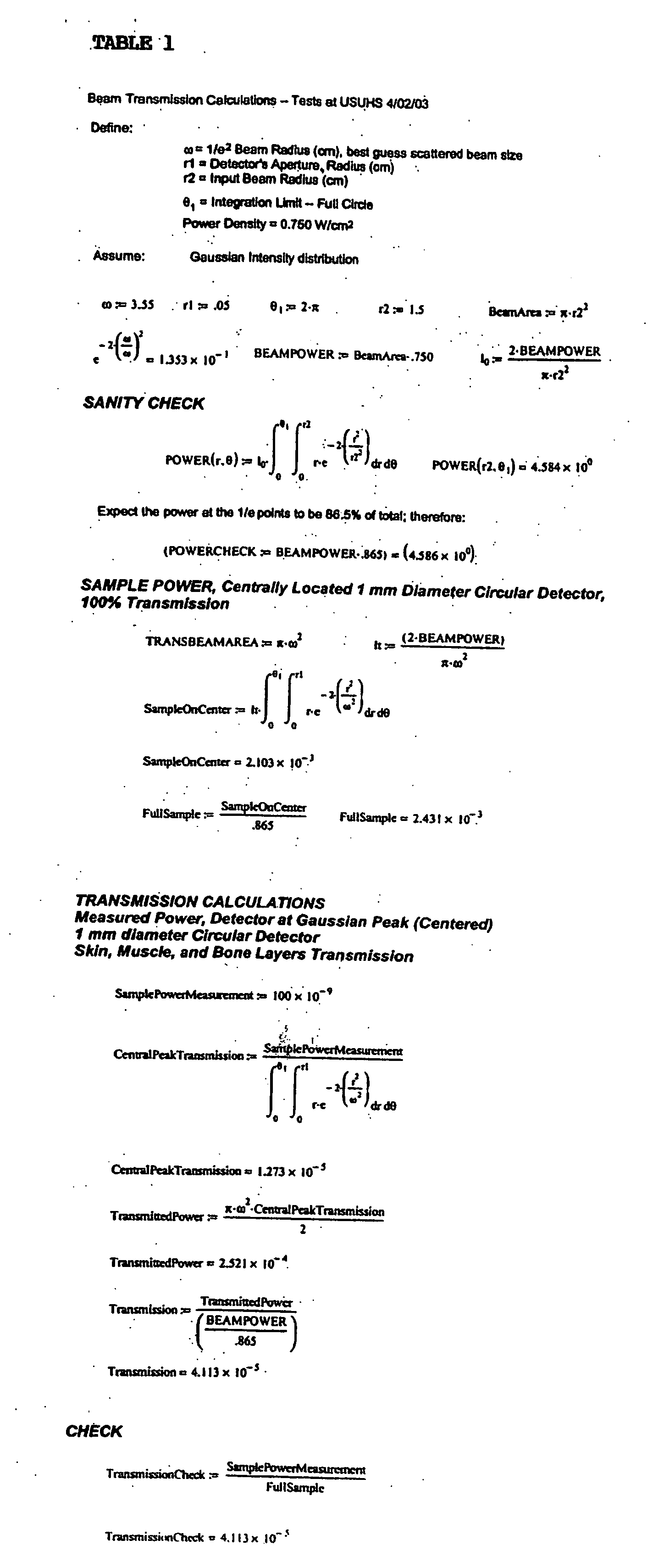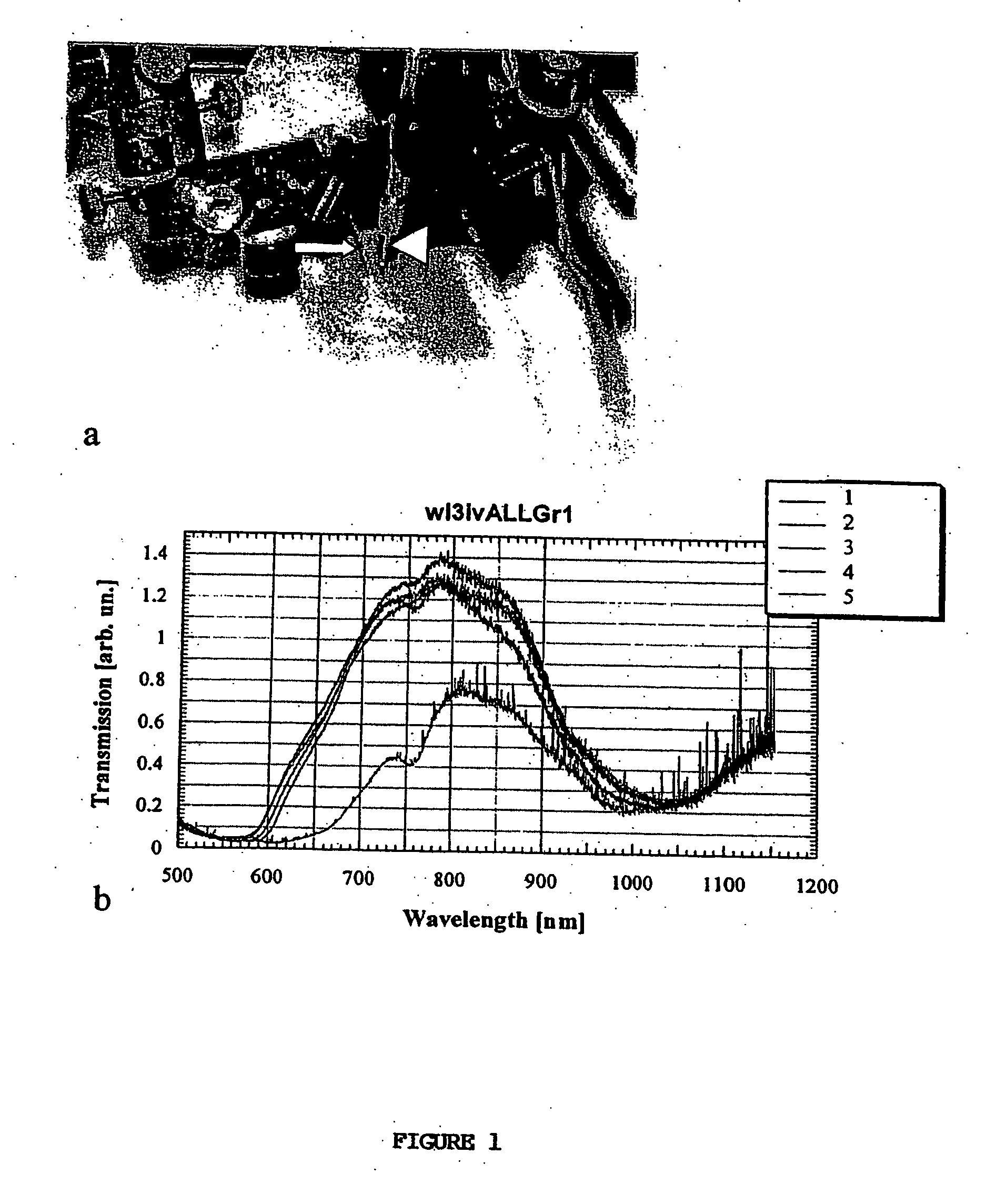Light promotes regeneration and functional recovery after spinal cord injury
a technology of functional recovery and light, applied in the field of light promotion of regeneration and functional recovery after spinal cord injury, can solve the problems of paralysis and loss of sensation and reflex function, autonomic dysfunction, and serious clinical problems of spinal cord injury (sci)
- Summary
- Abstract
- Description
- Claims
- Application Information
AI Technical Summary
Benefits of technology
Problems solved by technology
Method used
Image
Examples
example 1
Spectrophotometric Measurement
[0059] An incoherent broad band white light was directed at the surface of the skin in the low thoracic region of five adult Sprague Dawley rats. Rats were anesthetized with sodium pentobarbital (50 mg / Kg, I.P.) prior to all measurements. A smart, tissue-activated optical fiber probe [Ilev, I et al., Proc Spie 4616:220-228 (2002)] was inserted sequentially into the skin, sub-cutaneous connective tissue layer, deep connective tissue layer, muscle and the spinal cord within the vertebral column. At each of these layers, a transmission spectrum in the range of 500-1200 nm was collected while white light was applied to the skin surface.
example 2
Corticospinal Tract Lesion
[0060] Thirty adult female Sprague Dawley rats were used in this study. For all surgical techniques, rats were anesthetized with sodium pentobarbital (50 mg / Kg, I.P.). Dorsal hemisection was performed by an investigator blinded to group assignment. The ninth thoracic vertebra was identified and a laminectomy was performed to expose the spinal cord. A suture was passed beneath the dorsal funiculus. Iridectomy scissors were used to carefully incise this isolated portion of the spinal cord, transecting the CST. Inspection of the lesion and visualization of the central gray commissure verified that the CST had been completely transected. After the hemisection was completed, the exposed spinal cord was covered with gelfoam (Pharmacia, Upjohn; Kalamazoo, Mich.), and the overlying muscles and skin were sutured. During the recovery period, urinary bladders were manually expressed until spontaneous voiding returned approximately 1-2 days post-injury.
example 3
Retrograde Labeling
[0061] At the time of CST lesion, gelfoam soaked in hydroxystilbamidine methanesulfonate (HM; 3% in 0.9% saline; Molecular Probes, Eugene, Oreg.) was inserted into the lesion site of 20 rats. Ten weeks after the surgery, a laminectomy was performed at vertebral level L3, approximately 24 mm caudal to the original lesion site, and 1 μl of a 2% fast blue solution (in PBS, Sigma, St. Louis, Mo.) was bilaterally injected (0.5 μl into each side) into the spinal cord at a depth of 1.3 mm.
PUM
 Login to View More
Login to View More Abstract
Description
Claims
Application Information
 Login to View More
Login to View More - R&D
- Intellectual Property
- Life Sciences
- Materials
- Tech Scout
- Unparalleled Data Quality
- Higher Quality Content
- 60% Fewer Hallucinations
Browse by: Latest US Patents, China's latest patents, Technical Efficacy Thesaurus, Application Domain, Technology Topic, Popular Technical Reports.
© 2025 PatSnap. All rights reserved.Legal|Privacy policy|Modern Slavery Act Transparency Statement|Sitemap|About US| Contact US: help@patsnap.com



